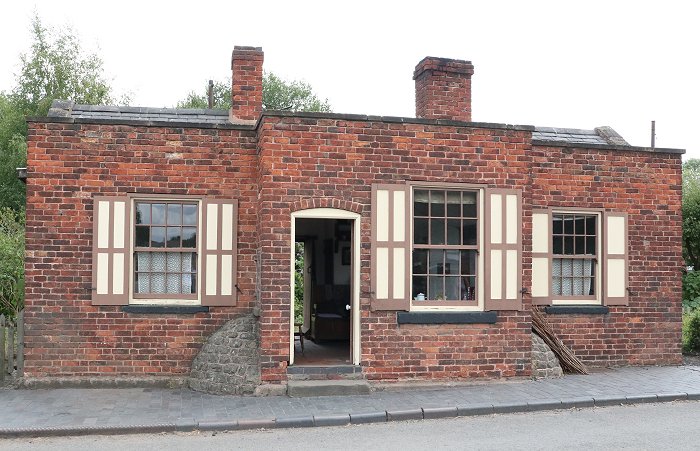|
Roads
One of the earliest references
to roads in Coseley appears in a writ to the Sheriff
of Stafford in 1290 about John de la Ho, who was
detained in Stafford jail for the death of Richard
de Bradeleye. The murder took place on the highway
from Dudley to Bradley, which must have passed
through Coseley and would have been no more than a
well-used dirt track.
After the Passing of the
Turnpike Acts in the early 18th century, the
situation began to improve. Before that, roads were
at best well-worn cart tracks. Most roads had deep
ruts and so where unsuitable for wheeled vehicles
and could be impassable after heavy rain. Pack
horses were usually used instead of wheeled
vehicles, and fitted with panniers called "dassells"
on which to carry heavy items such as coal or iron.
The Acts allowed authorised Trustees
(usually made up of local businessmen) to collect
tolls for 21 years in return for repairing a
particular road. Accordingly turnpikes (a gate or
barrier) were set up to collect the tolls.
Parliament created the first turnpike trust in 1706
and their numbers rapidly grew, so much so that by
1830 there were around 1,100 of them, created by
some 4,000 separate acts. The tolls were paid by
users once a day for the whole length of the road,
and regular users could pay quarterly.
At some turnpikes, toll houses were
built for the keepers and their families. One local
toll house, from Woodsetton, has been preserved and
is now on display at the Black Country Living
Museum.
|

Woodsetton toll
house in its original location. |
|

The Woodsetton
toll house at the Black Country Living
Museum. |
The exact number of toll gates
in Coseley is not known, but in 1875 a few still
remained. They were at Bunkers Hill, Cann Lane
(Hurst Road), Deepfields, Ladymoor, Littleworth, and
Woodsetton. Many of the tolls were let by auction.
The following notice appeared in a local newspaper:
|
Notice
is hereby given that the
tolls arising at the several
Toll Gates and Toll Bars,
upon the Turnpike Road
leading from Wombourne
through Sedgley to Bilston
and Princes End, in the
County of Stafford, will be
let by auction. To be let to
the best bidder at the house
of Julia Ebery, the Court
House, in Sedgley, on
Friday, the 25th. day of
November, 1831. .... For the
previous years it produced
£370 clear.
Dudley,
24th. October, 1831.
William Fellows, Jun'r.
Clerk to the Trustees of the
said Turnpike Roads. |
|
By the middle of the 1870s,
turnpike trusts in Coseley were rapidly
disappearing. In 1851, Coseley, Brierley and
Ettingshall had adopted an Act of Parliament that
allowed them to set up Highway Boards to give them
full control of the public roads in their area.
Another possible factor was the increasing cost of
maintaining the roads. |